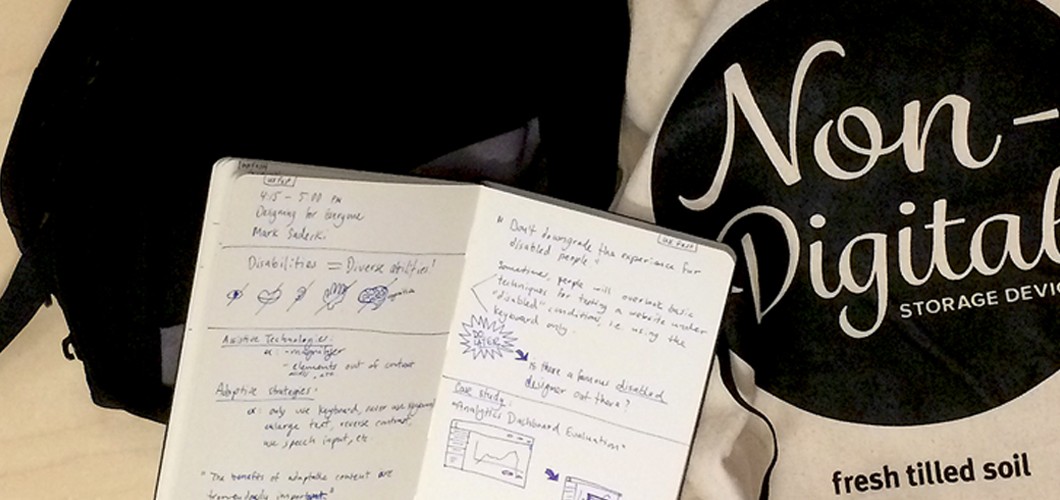As promised in my previous article about UX Fest, an event specializing in user experience and its related disciplines, here is the account of my experience in Steve Fisher’s conference-workshop about content strategy in the era of responsive web.
September 29, 9AM. Watertown, Massachusetts
Most participants were carrying pens, notebooks and a coffee in hand as they arrived at the workshop organized by the Canadian designer. From the outset, he revealed that although content strategy is a particularly unloved discipline in certain circles, many people are already using it without realizing. “It’s through our thinking process, conscious or not, that UXers avoid the problems usually linked to bad and broken content: disinterest, bad reputation and weak retention among users.”
Fisher called it an “unavoidable process”, but the question lingers: is it really relevant to address content strategy from the perspective of responsiveness? Is it not already, by definition, a practice that considers the medium’s analysis as an integral part of its process?
“Yes and no,” concluded the designer. “One imperative is to approach this thinking in terms of an exchange between specialists; like a conflict.” Currently, the inherent multidisciplinary nature of UX requires a greater understanding of concepts like creativity and teamwork. “The goal here is not to make an apology of responsiveness (a standard nowadays), but rather provide a reminder and highlight the methods that allow us to develop the visual and logical organization of various contents as a strategy. Responsiveness gives us the means to reflect the nature of multidisciplinary teams.”
At the start of the workshop, teams of 3-5 participants were created. As we did not know each other, we had to rapidly develop our methodology, as iterations were very short. Iterations only lasted a maximum of 15 minutes and were followed by a one-minute presentation. Each team focused on a website or project that required strategic input; it could be either something we had designed in the past and were unsatisfied with or a completely unrelated product.
The activity of extracting a strategy was divided into four distinct steps:
1. Find and specify the content’s origin
Depending on the demands and parameters for each specific project, it is imperative to determine the content’s origin. Certain notions such as narrative tone, relevance or writing style are important for this step.
2. Define the target audience
A main aspect to defining a strategy that must be thoroughly understood by the team is target audience. This could be defined using a classic persona or a simple list.
3. Quote the mission
What is the mission? The main goals? The ‘soul’ of the content should be expressed through a single sentence that communicates the general aspects of the project.
4. Create the design principles
By principles, we mean the criteria that, through implementation, will assure the relevance of the final strategy. For example, a blog project will surely develop through notions of participative content and user-submitted intel.
“We have to fight through tough times. This is what creates understanding and bonds us.” – Steve Fisher
Another important aspect was looking at the conflicts participants have to go through in order to achieve a satisfying strategy: “Everyone knows that a team should fight, but why is it that we don’t do it? Why do mediocre ideas sometimes survive the process? Simply because the conflict is seen as negative and exhausting. Any activity brings an aspect of healthy competitiveness and does not frighten those who would usually dread a confrontation.” This central element of conflict was more important than any flawed attempt to define the concept of strategy, a trap that Steve Fisher did well to avoid completely.
Fisher’s ultimate goal was not to spread the idea that there is only one approach to content strategy. Instead of pushing us to propose a final solution, the process itself proved to be our actual focus. The workshop was designed to help us understand these four steps and integrate them into our regular workflow. As a result, I now have a better understanding of the basics of a strong strategy and how it can generate huge gains throughout the project.


